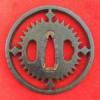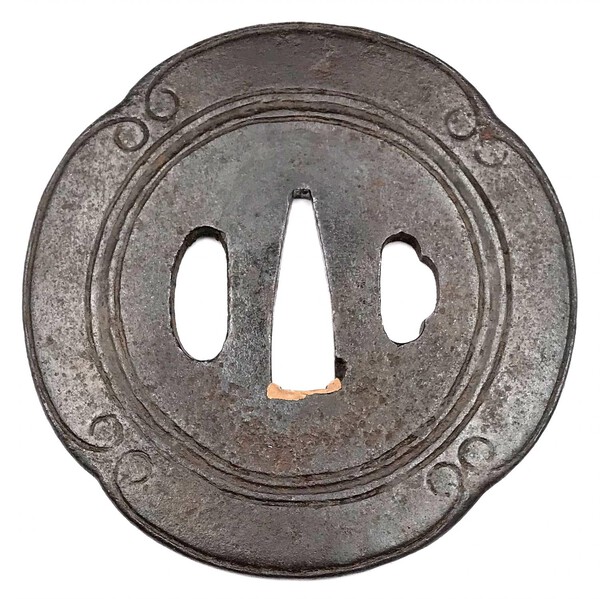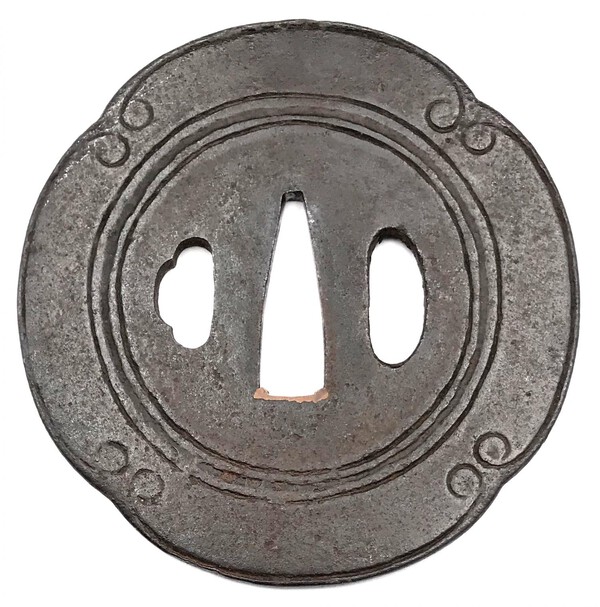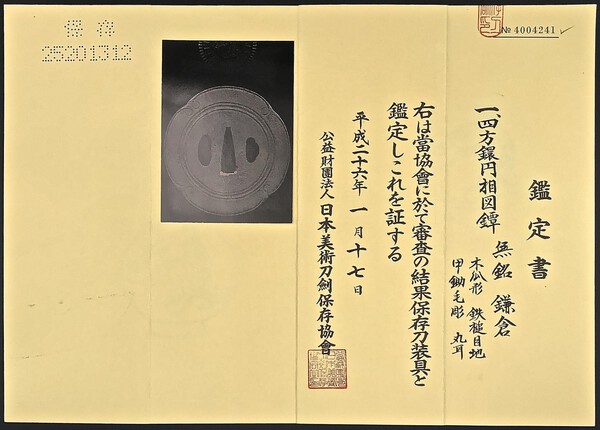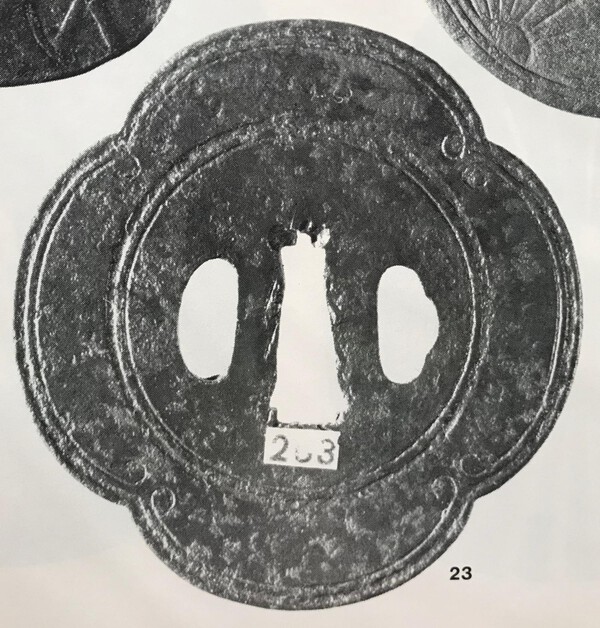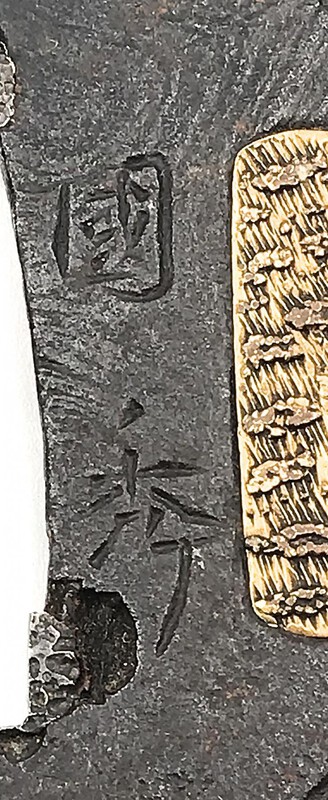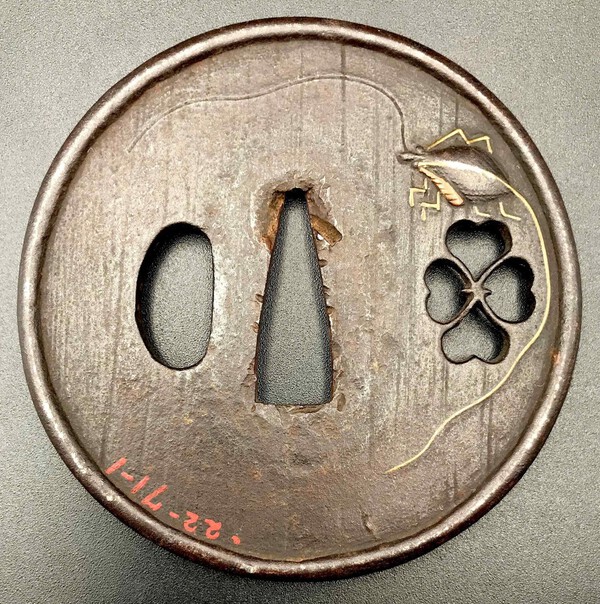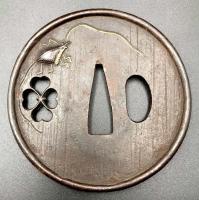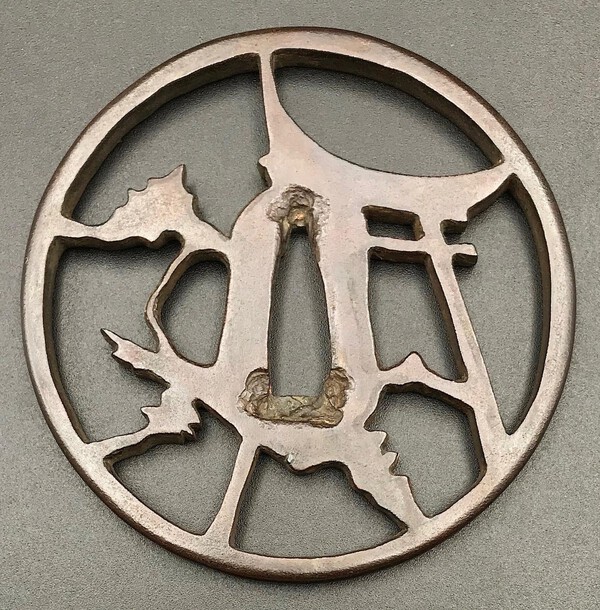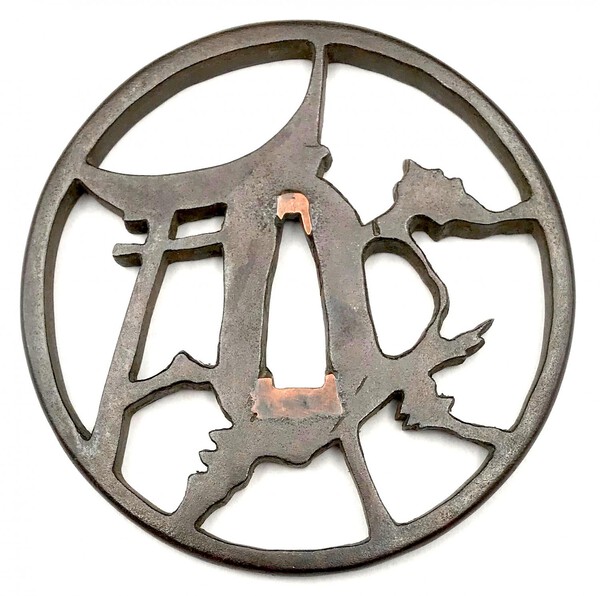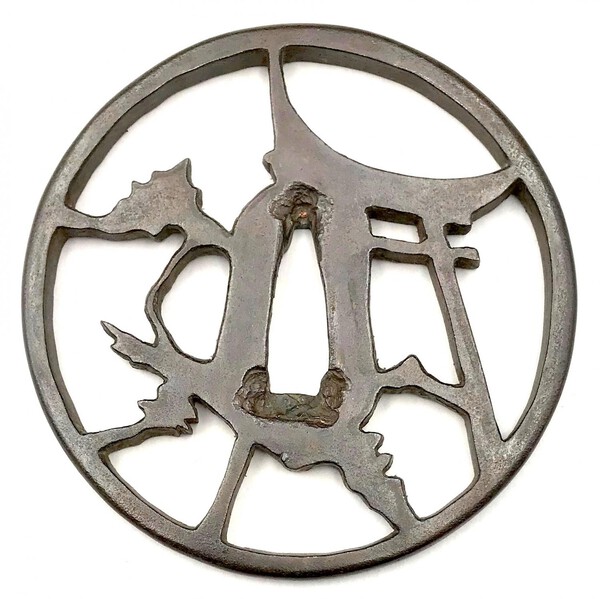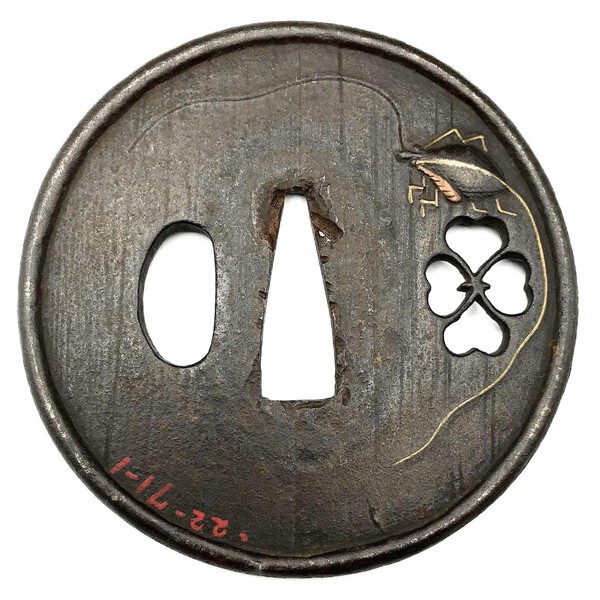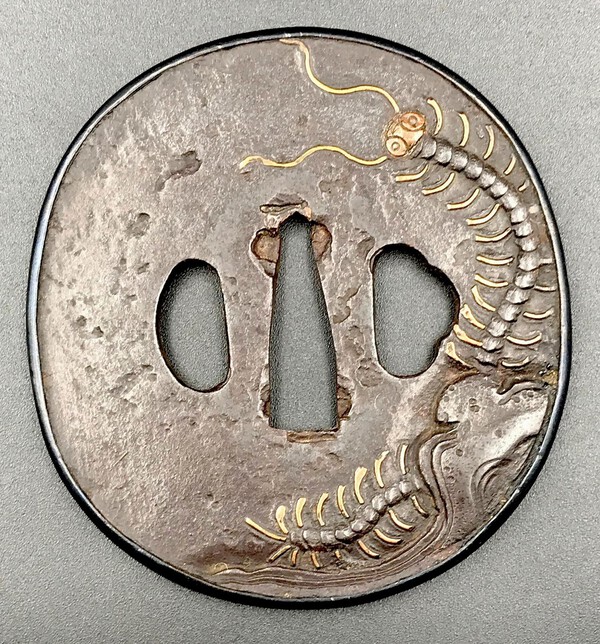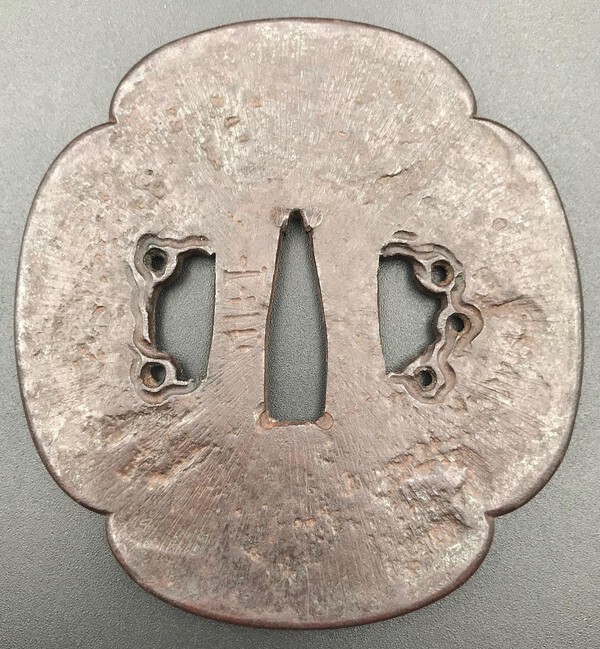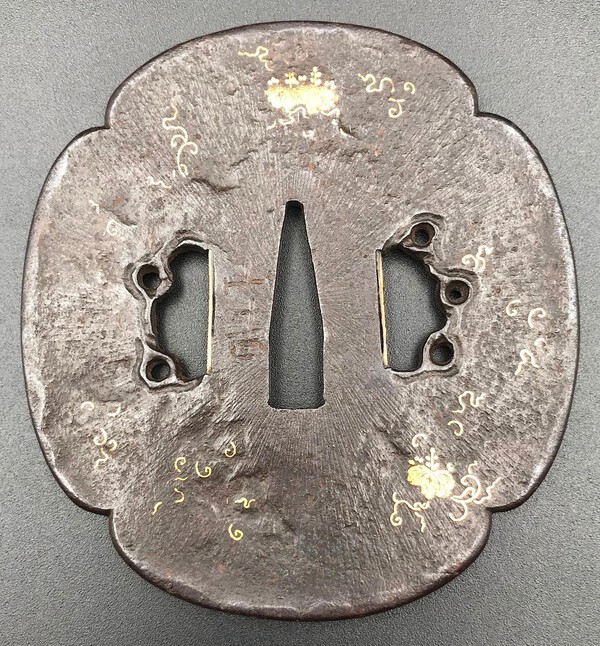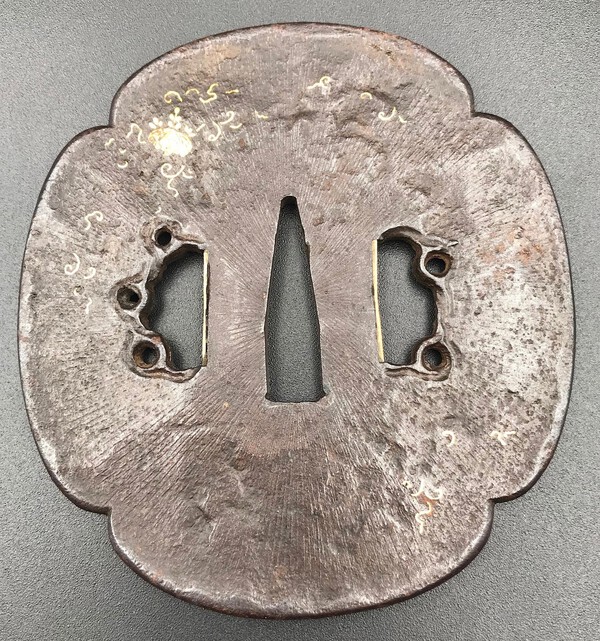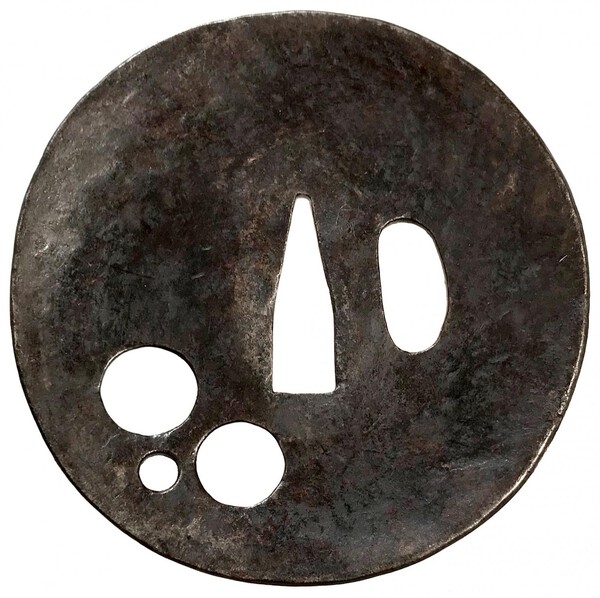-
Posts
172 -
Joined
-
Last visited
Content Type
Profiles
Forums
Events
Store
Downloads
Gallery
Everything posted by svarsh
-
Pete, this was most helpful! Thank you very much indeed.
-
That's what I found at Nihon Tō Kōza, Volume VI / Japanese Sword / Kodōgu Part 1, page 231: Enju Kunihide, a tōshō from Higo: "...forging of the jigane is excellent, and there are also pieces with mokume hada." Cannot find this Kunihide anywhere. When did he live?
-
I had this tsuba for quite a few months, I found similar in books, and I was sure it was a kamakura-bori piece of late Muromachi period, ca. 1400-1550. It was even papered. Recently, I acquired a look alike tsuba, also attributed to kamakura-bori style by the seller, a knowledgeable person. The second tsuba, however, was signed Kunihide, whoever he was, and had clear mokume treatment of the surface. Now, there are two similar pieces in books: 1) Dr. Walter A. Compton Collection, 1992, Christie’s auction, Part II, pp. 14-15, №16: “A kamakurabori type tsuba, Muromachi period, circa 1400. The thin, six-lobed iron plate is carved on each side with a wide groove that follows the shape of the rim, and with six scroll lines and a single thin circular groove. […] The hitsu-ana was added at a later date, circa 1500-1550. Height 8.3 cm, width 8.6 cm, thickness 2.5 mm. The tsuba was initially intended to be mounted on a tachi of the battle type in use from Nambokucho to early Muromachi period (1333-1400)”. 2) Robert E. Haynes Catalog #9 on page 24-25 under №23: “Typical later Kamakura-bori style work. This type of plate and carving show the uniform work produced by several schools in the Muromachi period. Some had brass inlay and others were just carved as this one is. The hitsu are later. Ca. 1550. Ht. 8.8 cm, Th. 3.25 mm”. A question I would like to address to community is: How come a kamakura-bori tsuba got a signature and mokume surface treatment?
-
Speaking of cricket's antennae, what about this one? At list I hope this one is not a modern fake...
-
Steven, you are surely right, they are very different. And mine is different to theirs. That's why I am asking your opinion: which school/age is my piece?
-
I've seen it, of course, Mauro. I trust Christie's, though we all make mistakes, including Christie's.
-
Thanks Mauro. I will keep it under Akasaka, as you suggested. Though, this is what some have said: Japanese Swords and Sword Fittings from the Collection of Dr. Walter Ames Compton (Part I). Christie's, New York, March 31, 1992, pp. 28-29, № 53: "A Tosa Myochin School Tsuba. Edo period (circa 1750), signed Toshu ju Kuniyoshi saku . The round iron plate pierced with a design of a temple gate (torii) and a pine tree. It has a round rim and there are some carved details on the surface of the design. The Tosa Myochin school, despite its foundation in the classic Myochin armor school tradition, worked mainly in the style of Akasaka school of Edo. [...] Many are equal to the mid to later Akasaka school work and the two types have frequently been confused. Signed examples are rare. Estimated price $1,500-2,000."
-
Hi Peter, The tsuba you mention as dote mimi "katchushi" was purchased at Hartman Rare Art in New York. It has a collection accession number. I understand that both pieces of circumstantial evidence (old reputable dealer and collector's mark) may lead us into the woods, but still I would prefer to think that it is an old and nice piece. What I like the most is that one antenna of the bug is inlaid and the other is carved out, and that which is carved and which is inlaid alternates on the face and the reverse.
-
Which one, Chris? The torii and pines? I don't think it's new. I bought it in Japan from a reputable dealer.
-
Thank you Alex. Very helpful. Please give me a link to your website.
-
No, Alex. None of my pieces is from my grandfather's collection. All of my pieces we acquired in last 5 years. I started collecting in 2013. The torii and pine tsuba was purchased in Tokyo in 2014. Sergei
-
OK, I got no response on my previous request. Let's see if I get any luck with this one: Myochin or Akasaka? Or something else? Looking forward to hearing from you. Sergei
-
-
Dear All: The First Draft is ready: YAMAKICHIBEI TSUBA. A LIMITED BIBLIOGRAPHY. Please provide your feedback, critique, edits, etc. (incl. but not limited to correcting my mistakes in the foreign language). Unfortunately, I don't have Owari to Mikawa No Tanko. I need it badly. Please help. Other suggestions regarding missing references would be highly appreciated. Even more unfortunately, most photos are of poor quality. This prevents the community from serious analysis of the signatures, similar to One Way Of Looking At Kaneiye. I hope that someone will do this job in the future (not me though). Looking forward to hearing from you, Sergei P.S. If you want to sell a few really good Yamakichibei pieces (Momoyama), I would be more than happy to buy.
-
Thanks Steve. Is there any other Yamakichibei photos (other generations, etc.) in the book?
-
Thanks Steve. I was thinking that the photos are from there. Very good! Can you tell which tsuba on the photos are which generation Yamakichibei?
-
Jean, if you would like your pieces to be cited, provide hi-res photos (~1MB) with short description: signature, generation, dimensions. Thanks. And yes, your last name, please! Best. Sergei
-
As we say in Russian: I sold it for what I bought it... (literal translation of an idiom; usually works in a funny way)
-
"Yamakichibei tsuba show a strong relationship with raku tea bowls ( chawan ) and the surfaces were probably produced the same way by repeated firings. Raku bowls express a sense of wabi feeling that was central to the Momoyama period tea ceremony ( cha-no-yu ), an important aesthetic ritual practiced by Oda Nabunaga and Toyotomi Hideyoshi as well as their relatives and close retainers. Wabi (literally, powerty) expresses the Buddhist principle of ku , which is described in English as 'emptiness', or 'the void' or 'formlessness'. The principle of ku was of interest to the Buke as both Miyamoto Musashi and Yagyu Munenori make reference to it in their respective manuscripts ' Go Rin no Sho ' and ' Hyoho Kandensho '." [From KTK #4, 2008].
-
Thanks Steve and All. Very informative. Anyone has and extra copy of Okamoto's Owari To Mikawa no Tanko? I would like to buy. My work is progressing well, hope to provide the first draft for your critique before the next week begins. I started with Shinkichi Hara in 1902, and I am already in 1982. Look, In 'Japanese art and handicraft' by Joly and Tomita, 1916 [10] on page 110 in section Archaic Types, Various: ..."In Nagoya, Yamakichibei, the Hoan and others produced primitive guards, which were later copied or improved upon by their own followers and copyists.''...
-
Hi Steve, I am currently studying literature mentions, compiling a bibliography on Yamakichibei tsuba. It may not be an article per se, but could help someone to write an article. Your specimen is of special interest to me. I was not able so far to find a single tsuba signed "Yamasaka Kichibei)". This signature is mentioned in the Torigoe/Haynes book, but there was no example provided. I wonder if yours bears that signature? Also, I would be thankful to everyone for providing me with good pictures of your real Yamakichibei tsuba with your permission to use (with the reference, of course). Front/back and signature close up, please. Sergei
-
I am starting my topic in the same manner as at http://www.militaria.co.za/nmb/topic/19632-a-lot-of-questions-on-a-yamakichibei-tsuba/: I recently acquired two tsuba on eBay from a decent seller, allegedly made by some 'Yamakichubei', and bearing a signature: yama (山) kichi (吉). Then, I bought another one, with the same yama (山) kichi (吉) signature and similar design, but decorated with gold inlay of paulownia with tendrils. Size of the first tsuba: 85.2 x 79.1 x 3.5 mm (seppa-dai) Size of the second tsuba:83.6 x 77.2 x 3.6 mm (seppa-dai) Frankly, I did not (and do not) think that these are a real Yamakichubei pieces, but they were cheap enough to buy for research purpose. How puzzled I was when in a few days I found the third specimen, almost identical to the ones before, but this time with a paper: https://www.ebay.com/itm/AMIDA-TSUBA-by-YAMAKICHIBEI-w-KICHO-Judgment-of-KATANA-sword-MOMOYAMA-3-3/123080838655?ssPageName=STRK%3AMEBIDX%3AIT&_trksid=p2055119.m1438.l2649 Seems like they are producing them en mass! Anyway, I would like to know what you think regarding these tsuba and Yamakichubei tsuba altogether. It seems to be a fascinating theme for research beyond what we know from 'Tsuba. An aesthetic study'. Sergei
-
Yes, wangata (concave) tsuba, thank you, Jean! It's a Chinese influence, not European as people say. Anyway, what's the inscription. One character was deciphered as MUNE/SŌ (宗) which means by itself "principle". But what is the other one?
-
It's a round tsuba of iron, pretty thin (2.5 mm at seppa-dai) and of kinda European cup-shape. Initially I thought that the marks are just a result of fighting, but now I see some sort of kanji in the marks. They may be upside down on my photos... What do you think? What's the inscription, school, age? Best regards, Sergei


